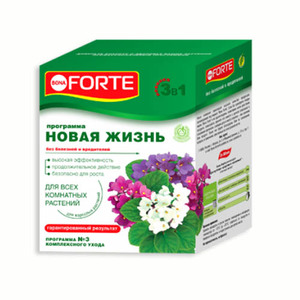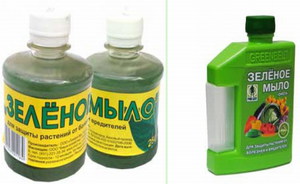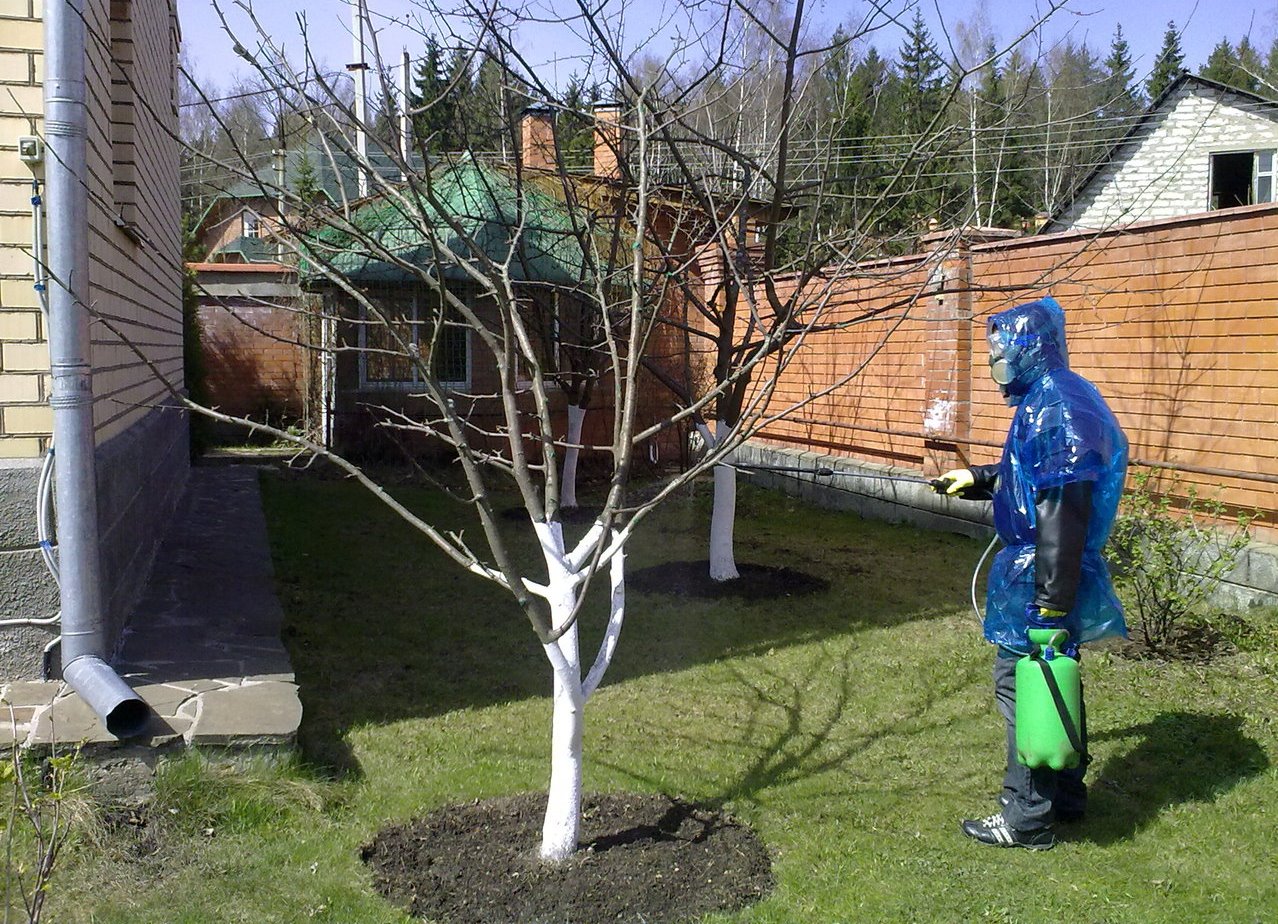In the process of gardening, fungicides are often used. We are talking about special chemicals that are used to combat pathogens that cause the development of fungal diseases, for example, gray mold, powdery mildew, etc.
Depending on the method of action on pathogenic fungi, several types of fungicides are distinguished: contact and systemic action.
Content
Actions of contact fungicides
When using these drugs, their penetration into plants is excluded. They cover the outer part of the plant, in the presence of the reproductive and vegetative organs of the fungus on the surface, they are suppressed. All drugs act for a different period, which is determined by the duration of the solution on the surface of the plant. The best results can be achieved if processing at least 3-5 times at intervals of 10-12 days.
A feature of contact fungicides is the local nature of the impact. They are not used to treat diseased plants; they are designed to suppress pathogens located on the surface or directly in plant tissues. Due to the fact that these fungicides are unable to spread to other parts of the plant, such a treatment before the formation of the fruit excludes their penetration.
Systemic drugs act in a slightly different way: as a result of processing, they penetrate into the internal organs of the plant, spread through the tissues, making changes in the physiological and biochemical processes taking place in the organs of plants. Over time, they happen decomposition within plants, which ends with the formation of metabolites. In this state, they begin to have a depressing effect on the harmful fungus.
Decomposition products that form inside the plant are believed to be more harmful than the drug itself. In order to avoid possible complications, it is best to carry out processing in gardens and in private households with the help of chemical preparations of precisely contact action. In this case, the deadline for their use is the period when there will be one month left before harvesting.
Types of fungicides and methods of their application
 In shops for gardeners, fungicides are offered in various forms: in the form powder, suspension, emulsionwell soluble in water.
In shops for gardeners, fungicides are offered in various forms: in the form powder, suspension, emulsionwell soluble in water.
Depending on the composition, the following types of fungicidal preparations are distinguished:
- Inorganic. Within this group, drugs of 1-4 hazard classes for humans and warm-blooded creatures are distinguished;
- Organic. The main component in them are active microorganisms that inhibit pathogenic fungi.
More preferred to use in summer cottages biofungicides, because in addition to high efficiency, they cause minimal damage to plants.
Chemical fungicides
Often, for effective pest control, gardeners buy new drugs, especially if they provide high efficiency with a small dose of application. However, doing this is wrong.You can count on good results only if you use proven drugs. Within a group of chemical fungicides that proved to be effective when used for protection during the growing season of various horticultural crops, the following can be distinguished:
- Bordeaux liquid;
- copper sulfate;
- abiga-peak, sun;
- oxyhome;
- zineb;
- tiram;
- potassium permanganate (potassium permanganate);
- soda ash using an adhesive (green soap).
Biological fungicides
In recent years, many contact biological fungicides have appeared on the market. In their manufacture, a slightly different approach is used than in the case of chemicals. The main component of biofungicides are active bacteria, whose activity has a depressing effect on the causative agents of fungal diseases.
It is more preferable to use biofungicides of contact action, since they do not cause or cause minimal harm to humans, warm-blooded animals, fish and bees. Consumers who are going to use biofungicides at home should pay attention to the following types of drugs:
 gamair P;
gamair P;- trichodermin;
- alirin-B;
- albite;
- phytosporin;
- bactophyte;
- agate;
- planzer;
- barrier and others.
Treatment with chemical fungicides of contact action is possible only before flowering and after harvest. The advantage of biofungicides is that they can be used throughout the growing season. At the same time, there are also drugs on sale that can be used at the stage of crop maturation. It should be borne in mind that contact drugs are effective for prevention. If the drug reaches the causative agent of the disease, then this leads to its death. If the plants are already affected by the disease, then they cannot be saved with the help of these drugs.
Rules for working with contact fungicides
 Before using a fungicide, you need to take care of your own safety: for this you need prepare closed clothes, rubber gloves and glasses and a hat. After finishing the treatment, the clothes are sent to the wash, and hands and face must be thoroughly washed with soap.
Before using a fungicide, you need to take care of your own safety: for this you need prepare closed clothes, rubber gloves and glasses and a hat. After finishing the treatment, the clothes are sent to the wash, and hands and face must be thoroughly washed with soap.
It is necessary to process plants with a pre-prepared solution. The exception is situations when the instructions require the use of a fresh composition.
In the process of preparing a solution for processing plants, it is necessary to strictly follow the recommendations specified in the instructions, maintaining the optimal consumption rate, taking into account the phase of plant development.
You can use fungicides in the most favorable conditions for this: early morning or evening, provided that it is worth dry calm weather.
The sprayer must be in the fine spray mode. A cloud of solution emerging from it should pour onto the plants from below and from above.
It is forbidden to use chemical fungicides against those plants, the green parts of the aboveground mass of which are planned to be consumed. For safety reasons, all crops should be treated prior to flowering and fruit setting.
Do not clean the dishes in which the solution was prepared in water bodies. Disposal of used pesticides should be carried out only in specially designated places.
The place where fungicides and other chemicals with a chemical composition are supposed to be stored should have limited access. Preparations must be placed in a sealed package.
If the investigator of the above rules for the use of fungicides, then you can not only prevent the appearance of dangerous pests on the site, but also not harm yourself and the environment.
List of fungicides
 Because of the high toxicity of most fungicides on offer today, the grower must have a good reason to use them at home.Before using the preparations, it is mandatory to familiarize yourself with the safety rules for the use of toxic substances.
Because of the high toxicity of most fungicides on offer today, the grower must have a good reason to use them at home.Before using the preparations, it is mandatory to familiarize yourself with the safety rules for the use of toxic substances.
Oxyhom. The drug consisting from copper oxychloride and oxadixyl... It belongs to the number of contact systemic fungicides, used for prophylactic purposes and to suppress diseases of garden and indoor plants. Recommended for use in the fight against late blight, macrosporiosis, black bacterial spot, septoria, etc. Non-toxicity makes this drug safe to use.
Preparation of working solution
Plants are processed only with a freshly prepared solution. First, you need to pour one third of the volume of water into the sprayer tank, then start the mixing device and pour the required amount of the drug. After the rest of the required water is poured, the solution is mixed well, after which it is treated with infected plants.
A prerequisite is the purity of the water used to prepare the solution.
The recommended consumption rate is one bag for 2 liters of water. In some cases, it may be necessary to carry out three treatments, but between them it is necessary to withstand a break of 10-14 days. Plants can only be processed with a freshly prepared solution based on the oxychom preparation. It can be used as a component for preparing complex mixtures.
Advantages of the drug:
- acts according to the system-contact principle;
- the effect after treatment lasts for two weeks;
- lack of toxicity, provided that the treatment is carried out in compliance with the recommended doses;
- economy of consumption when used for prevention purposes.
Trichodermin. It is included in the group of biological preparations designed to combat fungal and bacterial diseases. The main active ingredient is the spores of the soil fungus Trichoderma lignorum and the crushed grain substrate. The drug effectively fights against more than 60 types of soil pathogens, which are the cause of the development of many known diseases: root and fruit rot, seed infections, macrosporiosis, fusarium, etc.
The positive effect of the drug is to improve soil fertility, provide plant roots with additional nutrients, and increase seed germination.
Application method:
 to prepare a suspension in which the seeds will be soaked, it is necessary to take 10 g of the drug and dilute in one liter of water;
to prepare a suspension in which the seeds will be soaked, it is necessary to take 10 g of the drug and dilute in one liter of water;- If the drug is intended for irrigation, then the consumption rate will be the same as in the previous case. Watering should be carried out strictly at the root, portions of water should be medium;
- For spraying, a solution is prepared according to the following scheme: 10 g of the drug must be diluted in 5 liters of water;
- It can be used for preventive purposes during plant transplantation. In this case, the consumption rate will be calculated as follows: for one pot with a diameter of 25 cm, it is necessary to take the drug in an amount corresponding to the tip of a knife;
- It is allowed to add to the water in which the cuttings are kept for rooting. This measure is especially effective for cuttings that are prone to decay.
- For preventive purposes, it can be used just before planting. In this case, the following consumption rate is adhered to: 5 g of the substance is consumed per 5 liters of soil;
- To combat diseases, an aqueous suspension is prepared according to the following scheme: 5 g of the drug are diluted in 5 liters of water. Then the diseased plant is freed from the soil, the roots are cleared of the ground, the branches of the root system that have signs of darkening are removed, the main root system is washed with a suspension, after which the plant is planted in another pot, which is pre-filled with fresh substrate.
Conclusion
The problem of protecting plants from diseases is relevant for every gardener.To quickly and without consequences to cope with them, many are used for this chemical preparations. Fungicides are among the most popular that demonstrate high efficiency... However, when choosing them, it is necessary to proceed from the position in order to cause minimal damage to the plant. Therefore, preference should be given to those with the least toxicity. When choosing fungicidal preparations, it is necessary to be guided by their recommendations for use. This will help avoid unwanted consequences after processing.


